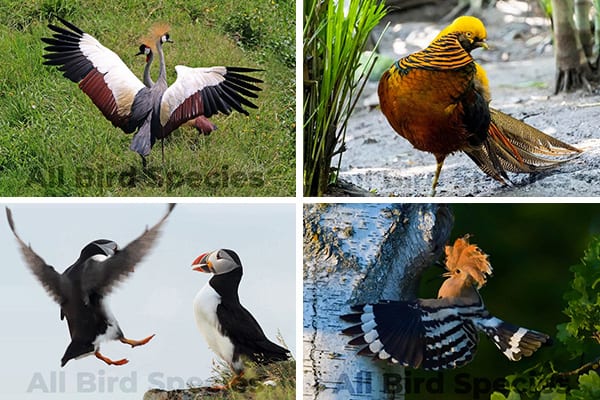Herons, Egrets, and Bitterns (Family Ardeidae) ID Guide
Did you know the Ardeidae family has over 60 species of herons, egrets, and bitterns? These birds live in many wetlands all over the world. From the Great Egret to the American Bittern, they are loved by birdwatchers and nature fans.
This guide will teach you about herons, egrets, and bitterns. You’ll learn about their looks, behaviors, and where they live. It’s a great way to get to know these amazing birds.
As we explore the Ardeidae family, you’ll see what makes them special. Herons, egrets, and bitterns are known for their beauty and variety. Join us on this exciting adventure.
Learn About Herons, Egrets, and Bitterns
The Ardeidae family includes herons, egrets, and bitterns. These birds are key to their ecosystems as skilled hunters. They live in many places, from freshwater to coastal areas.

They have different ways of finding food, making them good at controlling their food sources. This balance is crucial for their ecosystems.
Herons, egrets, and bitterns are very adaptable. They can live in many places, showing how flexible they are. You might see them in shallow waters or near ponds.
They also move to different places with the seasons and food. This shows how they adjust to their environment.
These birds live on every continent except Antarctica. Learning about the Ardeidae family helps us see how important they are. It also shows why we need to protect their homes.
Understanding the Family Ardeidae
The family Ardeidae is full of interesting birds. They have long necks and legs perfect for wading in water. Their bills are made just right to catch fish and amphibians, showing how well they hunt.
Characteristics of Ardeidae Members
The Ardeidae characteristics make these birds unique. They have special heron traits that help them live in different places. They fly with their necks tucked in, which is different from other birds. This lets them move easily through the air and water.
Diversity within the Family
The Ardeidae family has a lot of Ardeidae diversity with many species. Each one has its own way of living, showing in their size, color, and how they breed. You’ll see many egrets features and bittern traits. These differences show how these birds adapt to their environments.
Key Identification Features
To spot Ardeidae family members, know their size, shape, colors, and feathers. These traits help tell herons, egrets, and bitterns apart in different places.
Size and Structure
Each bird in this family has its own size. Herons can be medium to large, like the Great Blue Heron. Egrets are mostly the same size but look slender. Bitterns vary in size, making them easy to tell apart.
| Species | Average Height (inches) | Wingspan (inches) | Body Structure |
|---|---|---|---|
| Great Blue Heron | 48 | 75 | Long neck, wide wings |
| Snowy Egret | 24 | 39 | Delicate, slender |
| American Bittern | 26 | 42 | Stout and camouflaged |
Coloration and Plumage Variations
Bird feathers are key to spotting different species. Herons often have blues and grays. Egrets are mostly white or cream. In breeding season, they show off bright colors or patterns. Bitterns blend in with wetlands thanks to their patterns.
Knowing these differences helps you identify these beautiful birds more easily.
Herons
Exploring the world of herons shows us how each one is special. From the big Great Blue Heron to the elegant Grey Heron and the Purple Heron with its bright colors, bird lovers can get better at spotting them. They can learn to tell them apart by looking for certain features.
Great Blue Heron

The Great Blue Heron is huge, making it easy to remember. It can grow up to 4.5 feet tall. It has long legs and a thin neck, which makes it look elegant. Its feathers are blue-grey with black streaks on the head and neck.
It also has a big bill that helps it catch fish in the water. This makes it easy to tell apart from other herons.
Grey Heron
The Grey Heron is seen in many places and stands out with its grey and white feathers. It has a thick neck that tucks in when it flies, giving it a beautiful shape. It waits quietly to catch its prey.

This bird lives in both fresh and salty water, making it interesting to watch. Its unique traits make it a favorite among birdwatchers.
Purple Heron
The Purple Heron is not as common but is just as interesting. It has reddish-brown feathers with purple parts, making it stand out. Its long neck and sharp bill help it hunt.

It likes to live in reeds and wetlands, so it can be hard to see. But knowing what makes the Ardea purpurea special can help you spot it.
| Species | Height | Plumage Color | Habitat | Unique Traits |
|---|---|---|---|---|
| Great Blue Heron | 4.5 ft | Blue-grey with black streaks | Wetlands, marshes | Large wingspan, long neck |
| Grey Heron | 3.3 ft | Grey and white | Freshwater, coastal areas | Stout neck, hunts by waiting |
| Purple Heron | 3.3 ft | Reddish-brown, purple accents | Reed beds, wetlands | Elusive, prefers hiding |
Egrets: Beautiful White Birds
Egrets are known for their beautiful white feathers and tall, elegant look. This part talks about how to tell apart the Great Egret, Snowy Egret, and Little Egret. It helps you spot and enjoy these lovely birds in nature.
Great Egret

The Great Egret, or Ardea alba, looks amazing in wetlands. To spot one, look for its big size, over three feet tall. Its all-white feathers stand out against green plants. Notice its long, thin neck and legs too.
During breeding season, the Great Egret has a bright yellow bill. This makes it easy to tell apart from other birds.
Snowy Egret

The Snowy Egret, known as Egretta thula, is known for its grace. It’s smaller than the Great Egret. Look for its thin body and yellow feet, which help it hunt.
During breeding, it shows off beautiful plumes. This adds to its already charming look.
Little Egret
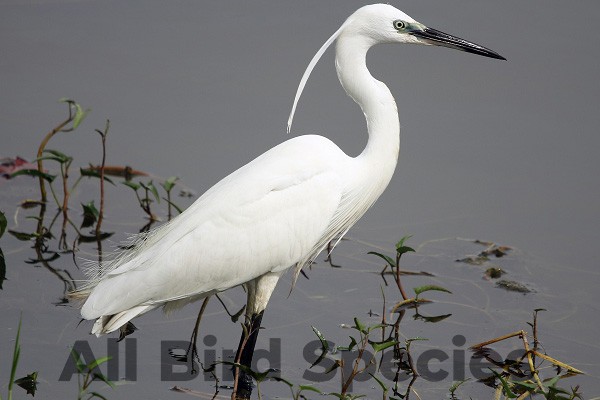
The Little Egret, or Egretta garzetta, is smaller than the Snowy Egret. It stands about two feet tall. It has a sleek body and a pointed bill, similar to the Snowy Egret.
But, it has some key differences. The Little Egret has different leg colors and a unique face shape. These differences make it easier to tell apart from other egrets.
Bitterns
Bitterns are hard to spot because they blend in well and are secretive. They have special ways to hide. We’ll talk about how to tell the American bittern, the Eurasian bittern, and the little bittern apart.
American Bittern
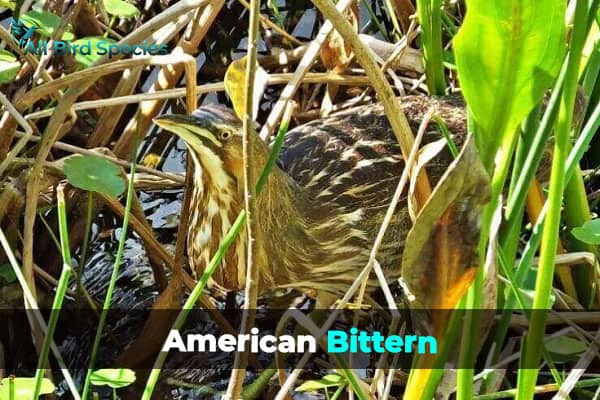
Look for the American bittern in wetlands. It has brown feathers with streaks that help it hide. You can tell it’s there by its loud call during breeding season. It stays still, looking like a reed or grass, when it feels threatened.
Eurasian Bittern

The Eurasian bittern (Ardeidae Family) has unique looks that help you spot it. It has brown or beige feathers with dark streaks. It’s bigger than the American bittern. Watching how it hunts in shallow water can also help you find it.
Little Bittern
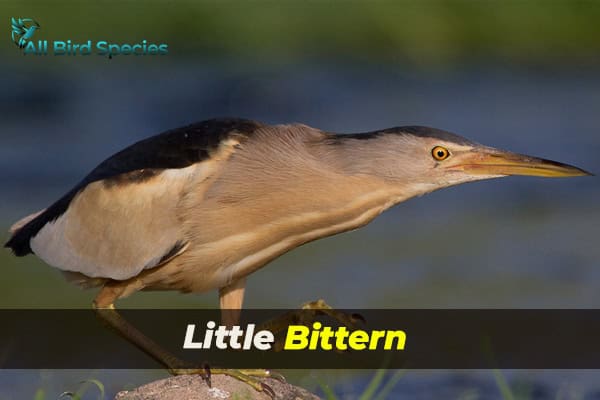
The little bittern is small and has a special look. It has a short neck and dark and light feathers. They like to hide in reeds, so you need to be patient. Listening to their unique calls can also help you spot them.
Common Myths and Misidentifications
Many people get confused when trying to identify birds. This is because some birds look very similar. Knowing the differences between cranes and herons, and how they relate to ibises and spoonbills, can make birdwatching more fun.
Cranes vs. Herons: Understanding the Difference
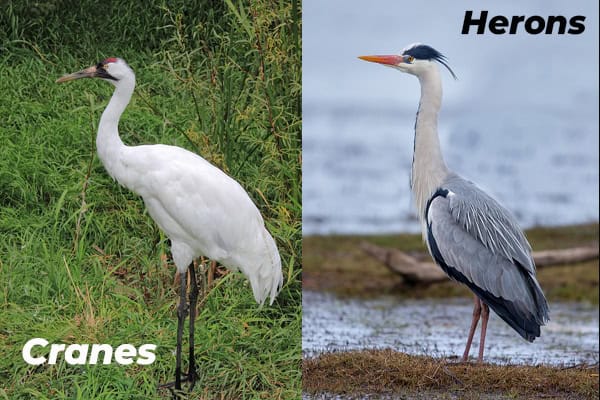
Many birdwatchers find it hard to tell cranes and herons apart. They both have long legs and necks. But, there are key differences. Cranes stand more upright and have wider wings, making their flight steady and gliding.
Herons stretch their necks more when they fly and move differently when they take off and land.
Similarities with Ibises and Spoonbills
It’s easy to mix up herons with other birds like ibises and spoonbills. Each has its own special traits. Ibises have long, curved bills and unique feathers. Spoonbills have bills shaped like a spatula, unlike herons.
Knowing these traits helps clear up confusion and makes spotting these birds easier.
| Bird Type | Key Identification Features |
|---|---|
| Cranes | Upright posture, broad wings, gliding flight |
| Herons | Extended necks, elastic flight patterns |
| Ibises | Long, curved bills; distinct feather coloration |
| Spoonbills | Spatula-shaped bills, often colorful plumage |
Habitat and Behavior of Ardeidae
Learning about Ardeidae can make you appreciate these elegant birds more. Herons, egrets, and bitterns live in many water-rich places. Their homes show us how they live and help keep nature in balance.
Typical Habitats of Herons and Egrets
Ardeidae live in many places, but they love areas with lots of water. You can find them in:
- Wetlands
- Marshes
- Lakes
- Coastal Areas
- Rivers and Streams
These places offer them food, homes, and safety. Having lots of plants in the water makes it easier to see these beautiful birds.
Feeding Patterns in Various Environments
Looking at how the Ardeidae Family eats shows us what makes them special. They hunt in different ways depending on where they are:
| Bird Type | Feeding Method | Preferred Prey |
|---|---|---|
| Herons | Stalking and Ambushing | Fish, Amphibians |
| Egrets | Active Pursuit | Small Fish, Invertebrates |
| Bitterns | Camouflage and Ambush | Fish, Small Birds |
These feeding habits show how they adapt and control the food supply. Watching them eat can teach us more about their importance in nature.
Seasonal Migration and Distribution
Herons, egrets, and bitterns move with the seasons. They have different ways of migrating. Some stay in one place all year, while others travel long distances.
This shows how they adapt to their environments. It’s interesting to see how they change with the seasons.
Resident vs. Migrant Species
In North America, some herons stay in one place all year. These are called resident species. The Great Blue Heron is one example.
Other herons migrate to find better places to live and food. They travel long distances to get to these places.
Factors Influencing Migration Patterns
Many things affect where herons and other birds migrate. Things like temperature, wind, and rain help decide when they move. Food is also important. If there’s less fish, some birds will move to find more.
When it’s time to have babies, birds also move. They go to places that are best for nesting.
Check Our Previous Articles:
Conclusion
Ardeidae Family, including herons, egrets, and bitterns, are key to our ecosystems. They help keep wetlands healthy by controlling fish and insects. They also add to the variety of life around us.
Learning about their lives, homes, and the challenges they face can make us appreciate them more. It’s a great way to grow your knowledge and love for these beautiful birds.
When birdwatching, think about how your actions affect their homes. Watching from a distance helps these birds and their homes last for the future. Enjoying these birds means also working to protect them, showing the need for everyone to help.
Next time you’re in nature, look out for Ardeidae birds. Birdwatching can be rewarding and teach us about the importance of these birds. With care and thought, we can help protect our bird friends and their homes.

